This is my favorite moisturizing cream recipe yet. I highly recommend this formulation for dry, damaged skin and/or winters itch. I LOVE it! Besides being all natural, this colloidal oatmeal cream recipe contains ingredients that will help protect, soften, nourish, heal and rejuvenate the skin. Making your own homemade cream is fun, rewarding and easy. Use this on your face, hands and body. Your skin will love you for it.
Colloidal Oatmeal Cream Recipe – ingredient benefits:
Colloidal oatmeal benefits (skin):
- Helps heal skin
- Protects and moisturizes skin
- Soothes and relieves minor skin irritations
- Reduces redness and itching
- Improves skin elasticity
- Reduces scarring
- Protects the skin by creating a natural barrier
- Relieves sunburns
- Destroys bacteria
- Relieves inflammation and soreness
- Helps heal burns, cuts and wounds
- Sooths itchy skin
- Helps sooth and heal psoriasis, eczema and acne
- Moisturizes
Aloe vera gel benefits (skin):
Grapeseed oil benefits (skin):
- Good for all skin types
- Repairs skin damage from the sun
- Helps slow the process of aging
- Has anti-inflammatory and antioxidant properties
- Helps prevent clogging pores and breakouts
- Nourishes skin, helping keep it smooth and subtle
- Easily absorbed into the skin
- Helps to tighten and tone the skin
- Helps to heal skin
- Regenerates skin cells
Coconut oil benefits (skin):
- Good for all skin types
- Moisturizes skin
- Helps heal skin
- Protects the skin from free radical damage
- Easily absorbed into the skin
- Provides nutrients to the skin
- Benefits to the skin’s connective tissue
Amara Organics Aloe Vera Gel from Organic Cold Pressed Aloe, 8 fl. oz. Grapeseed Oil from Majestic Pure, 100% Pure & Natural Massage and Carrier oil, 16 fl oz
Grapeseed Oil from Majestic Pure, 100% Pure & Natural Massage and Carrier oil, 16 fl oz Viva Naturals Organic Extra Virgin Coconut Oil, 16 Ounce
Viva Naturals Organic Extra Virgin Coconut Oil, 16 Ounce
Colloidal Oatmeal Cream Recipe:
How to video:
Supplies:
4 (4 oz) or 2 (8 oz) glass jars
Blender, food processor or stick blender
Ingredients:Cuisinart Smart Stick 2 Speed Hand Blender, Brushed Stainless Steel
1/2 cup of aloe vera gel
½ cup colloidal oatmeal tea*
1 teaspoon of vegetable glycerin
1/3 cup of coconut oil
1/2 ounce of beeswax
1/4 cup of almond oil
½ cup grapeseed oil
Up to 1 ½ teaspoons essential oils or natural fragrance oils (optional). I used 1 tsp ylang ylang and 1/2 tsp sage essential oil just for fun.
Soap safe colorant (Optional). I used no colorant.
Beesworks® BEESWAX PELLETS, YELLOW, 1lb-Pesticide Free-Chemical Free-Cosmetic Grade-Must Have For Many Different Projects Viva Naturals Sweet Almond Oil, Hexane Free for Skin and Hair, 16 oz / 473 ml
Viva Naturals Sweet Almond Oil, Hexane Free for Skin and Hair, 16 oz / 473 ml Glycerin Vegetable Kosher USP – 1 Quart (43 oz.)
Glycerin Vegetable Kosher USP – 1 Quart (43 oz.)
Place aloe vera gel, colloidal oatmeal tea* and glycerin in 2+ cup bowl. Place almond oil, grape seed oil, coconut oil and beeswax in a microwave safe bowl, microwave on high for 30 second and stir. Repeat in 20 second intervals until fully melted.
Run stick blender in aloe vera, colloidal oatmeal, glycerin mixture (a food processor may be used). Slowly pour in melted oils. As the oils are blended in, the cream will turn white. As soon as you have a mayonnaise-like consistency, stop motor, add essential oils and colorant, and then pulse blend. Do not over blend.
Transfer cream to glass jars while still warm because it thickens quickly. I use 4 oz decorative jelly jars. They are perfect as gifts, or as an addition to a spa gift basket.
I am not the only one enjoying this cream. My friends and family are already asking for more!
*To make colloidal oatmeal tea; place 2 tablespoons steel-cut oatmeal in a coffee grinder. Grind oatmeal until it is the texture of very fine powder (this is colloidal oatmeal). Mix the colloidal oatmeal in 1 cup boiling water. Mix with a wire whisk until dissolved. Let stand for about 5 minutes. Pour your colloidal oatmeal/water mixture through a coffee filter into a cup. You want to end up with ½ cup colloidal oatmeal tea.
NOTE: Lasts a week or so if stored in a refrigerator. Also, grape seed oil will give the lotion a bit of a green tint.
Now go have FUN and relax.
Related articles:
The Best Colloidal Oatmeal Mask
Homemade Conditioner – Colloidal Oatmeal
Colloidal Oatmeal – A Really Really Simple Bath for Dry Itchy Skin

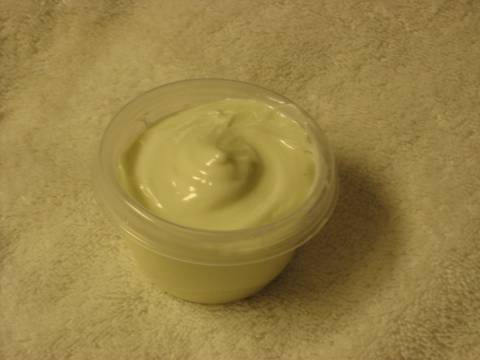
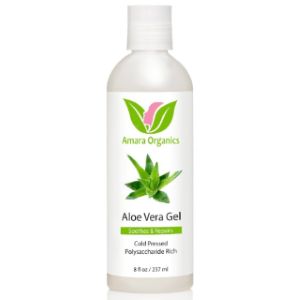
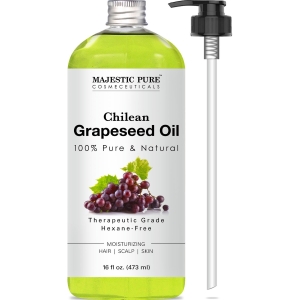
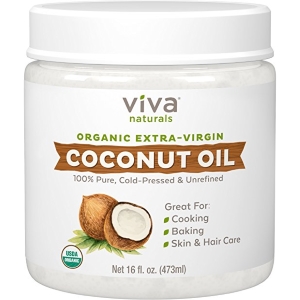
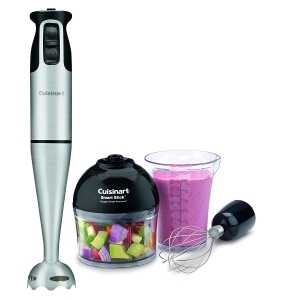
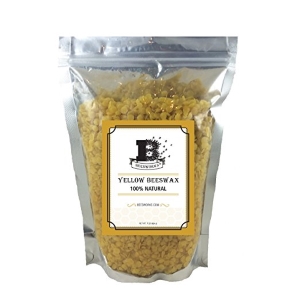
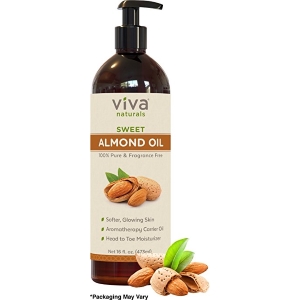
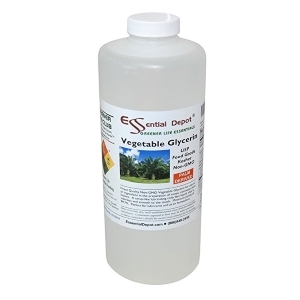
Too bad we don’t standardize these measurements. Humans, whatever are we to do with them? There’s 140 grams of oats/cup.
There’s no such thing as a dumb question. 🙂 Use the top half of the tea, that way you won’t have the sediment from the bottom making your cream grainy.
I buy my the majority of the ingredients from Fred Meyer (aloe gel, steel cut oats, vegetable glycerin, coconut oil, almond oil and grape seed oil). The bees wax and essential oils I pick up at a local health food store. If you would like some brand suggestions, I would be happy to help. 🙂
Hi there friend,
Vegetable glycerin (glycerol) is a syrupy sweet alcohol (not the kind that gives you a buzz). It is produced by the hydrolysis or transesterification of the triglycerides in fats and oils.
You can find vegetable glycerin at many pharmacies, health food stores and online.
Hope this helps,
Vic
Jojoba oil is a great alternative. For more information check out this post: http://www.spafromscratch.com/?p=1869. Also you may just use another 1/4 cup of grape seed oil.
Hi there beautiful goddess,
This cream will be fine to use on your babies. However, you will want to do a patch test just to be sure they aren’t allergic to any of the ingredients. Actually, it’s wise to do a patch test on any new product you use on your skin or that of your little ones.
To do this, apply a small quantity of cream to the inside of the baby’s elbow joint. Wait 24 hours. If there is no rash or visible signs of reaction, you’re in business.
Thanks for the answer.
I am not a big germ phobe, but I like to remain healthy too. Balance seems to be called for. (I stopped exclusively buying anti-bacterial soap – as I have read there are beneficial germs on us, and in us, and now also use castille soap – unless I have really had my hands in something real germy – then I use the anti-bacterial brand of liquid soap).
I was wondering, if I stopped using my fingers to scoop the cream out, and used a sterilized spoon, for example, should not that extend the bacterial free life of the cream?
I will try the freezing experiment, that sounds like a easy way to extend the life, assuming it is useable after thawing.
Thanks.
Yes, if you avoid using your fingers you will decrease contamination. It isn’t necessary to use a sterile scoop, just wash it with hot water and soap. Also, avoid leaving the cap off the jar. Lots of little beasties floating around using dust particles as steeds.
By the way, you should use the same precaution with foods. Always replace the lid immediately after use. This is particularly true of milk products.
Good luck with the freezing. Be sure and report back on how the thawed cream works out.
Well I have been using this nice cream for 12 days now. I keep it cold in the fridge.
Since I am approaching the 2 week point, I was wondering if I can continue to use the cream past 2 weeks? I have not noticed any black, or green mold, on it – is it safe to continue using it as long as I see no molds?
What would happen if I froze what I have left – would that protect it from spoiling?
Are black, and green, molds the only contaminants concerns to look out for?
Thank you for your questions.
I have kept this cream in the refrigerator for two months with no ill effects. I suspect the antimicrobial and anti-fungal properties of the oils may have helped preserve it.
As for freezing the cream, that I haven’t needed to do so I can’t answer your question. However, if I had extra cream, I would have no problem freezing it. It’s just too good to waste.I would suggest you try freezing a small quantity and then thaw it to see if there’s any change in consistency.
Over time there may be bacterial contamination of a cream that has no preservatives and contains a natural food (aloe, oatmeal tea) and a growth medium (water). This would be a bigger concern if the product was used internally vs externally. When you dip your fingers into the cream, you are inoculating it with microbes and fungi. Your refrigerator curbs the growth of these organisms, but doesn’t kill them.
Keep in mind you are exposed to millions of these tiny creatures every day and are far more likely to pick up a disease causing bug from strolling down the aisle of your local supermarket or kissing your significant other or licking your fingers than you will be from applying this cream to your skin.
Well, not happy with first attempt. My ‘lotion’ was pretty thin, more like a heavy oil – not close to a Mayonnaise thickness. More like a thin gravy.
It looked thin while mixing with my imersion blender, so I thought maybe it needed heavier whipping, and got out my electric hand mixer with two beaters and beat it more with that. Still thin.
When I applied the ‘lotion’, it did not soak in to my skin, and every surface I touched got so greasy I had to get a napkin and wipe it off.
I even put it in the fridge, and fifteen minutes later it was still pretty thin and oily.
A little desperate, I thought it might need more wax. I melted another half ounce in some olive oil, and heated the ‘lotion’ for 1 minute, and blended together, now it’s even worse, clumpy bits of wax.
Did I mess up somewhere?
Can I fix this at this point? (add corn starch, or, add some other lotion?)
It has been in the cold refrigerator about 5 hours now, and has thickened a lot. It is at least the consistency of mayonnaise, so I may just not have waited long enough for it to cool?
Will this lotion, when at room temperature(70-75 degrees), be less thick (not exactly watery, but like a gravy consistency)?
How long should it take to be absorbed into the skin? (Mine takes about two hours – that seems like a long time to me).
This is the first time I’ve tried to make a lotion, so I am sorry for all the questions. Also, the store bought lotions I am used to feel different. They are thick at room temperatures, unlike this one. I have been buying ALBA, and prior to that was using Dermasil (tube) – so that is my point of reference. Is that about how the lotion in this recipe should feel, and be like in thickness at room temperature?
The cream should be almost solid when refrigerated. Think butter. Don’t forget, this is a cream and not a lotion, so use it sparingly. The bees wax is the thickener and can be adjusted up or down depending on the desired consistency.
Congratulations on your first attempt at making colloidal oatmeal cream. Don’t be discouraged. If it is taking awhile for the cream to soak into your skin then the oils and wax probably didn’t emulsify properly. Adding lotion to the cream may help, but I wouldn’t add anything else. Use it before you go to bed and in smaller amounts then it won’t be wasted. Remember it is a cream not a lotion.
Often the mixing stage is the hardest step. Regular mixers are not fast enough to emulsify the oils into the mixture. My favorite kitchen tool to use is a food processor followed second by a good stick blender. Also, it can be tempting to stop mixing too soon. If the cream is not close to a mayonnaise texture then it needs more mixing time.
Both my son and my husband suffer from winter itch. This cream has been their cure. I get many requests for this particular cream from family as well as friends. Last year I gave jars of it to friends and family as gifts for Christmas. If you would like, I would be happy to make a video of the process and post it on this page.
We really appreciate your comments. They will be very helpful to others who attempt to make cream for the first time. 🙂
Thanks for sticking through this with me.
I think a video would be great! (Sometimes it requires watching a process, to really know how to do it).
After reading your feedback, I assume I did not mix long enough, or fast enough. I started with a stick blender I got it at a garage sale, and that was the first time using it.
I did think while making this that the stick blender was not whipping the mixture very strongly – and that is why I got out the hand blender (with two long beaters blades on it) that I use to ‘mash’ potatoes with. That blender has 10 speeds on it, and I dio not think I went above 6.
I also have a small food processor, and stand up blender I could dig out and try with on my 2nd attempt. (I wonder which has the most power and speed?)
Just so you know, after I added the extra bees wax, it got real thick overnight in the fridge, and it almost resembles a vaseline consistency, just more oily, or even like a thicker, but more oily ‘solid form’ of the coconut oil. Almost like an ointment.
Bottom line – I never saw a mayo like texture – so that immersion is what failed(I think), and maybe that it cooled off – as I was taking too long?
I did miss that this was a cream, I guess i had lotion on my brain as I was searching the web. I focused primarily on the fact that this recipe used colloidal oatmeal ‘tea’ – as I do have very itch skin on my thighs that otherwise is only helped with steroidal prescription topicals.
I do not want to keep using steroidal lotions forever(I’ve been using for about 1 year now). My itchiness is all season long, and even a dermatologist could not get resolved for me. It is at it’s worst in the middle of the night. I had tried using colloidal oatmeal ‘paste’ that I made with water, and then with oil, but that would dry up and flake off all over the place.
Another question for you, is there a way to alter this to make it more of a lotion? I know creams are thicker, so could it a matter of using more water to oil, or less bees wax?
Is there a preservative you could recommend to extend the shelf life?
Less bees wax will help to create more of a lotion consistency, but bees wax is very good for the skin. The Mayo Clinic even recommends purchasing lip balm containing bees wax during the cold season.
I’ll make up a batch to be more lotion like and get back to you. The very first time I made this recipe, it was with a food processor. I have a small one as well. The problem with my small processor is there is no hole in the top for adding anything. Hopefully yours is better.
I really hope this cream works for your skin condition. I have first hand seen people who suffer from psoriasis, winter itch, acne and dry skin benefit from this cream.
While I get a video together for this recipe you should consider getting a scale. Type “digital scale .001 gram” into Google. You can pick one up for around $10 online.
I will have to get back to you on the preservative, but we tend to discourage that here. You might consider making just a half batch at a time.
Thanks again for the great comments. 🙂
I have been using my, let’s call it ‘ointment’ for almost a week now. I have learned that if I use less, and rub it in longer, it will not feel greasy for long. I do keep it in the fridge all the time. I will investigate getting a scale. I do think this help with the itch for a few hours.
Do you have a recipe with an increased amount of colloidal oatmeal?
Are there other oils, or additives that are known itch relievers?
I’m so glad you reminded me. I may try making this without beeswax just as an experiment. 🙂
The video is finished. 🙂
The video is in the content of the article above. 🙂
One more question for you, how long will this keep for? Do you keep refrigerated? Would you add some kind of preservative?
It lasts a good two weeks in the fridge. Be sure and try it out right away after making it. The texture along with the warmth is just wonderful. 🙂
Let me know if you if have any other questions. I’m happy to help.
I forgot to ask also, I do not have a scale to measure the 1/2 oz of beeswax. I purchased a 1 pound bag which has many ‘chunks’ of bees wax. I can estimate by sight, but I wondered if you could also give me advice on the approximate size of what I am shooting for? Would 1/2 oz look like, say, a half inch square cube?
If I am off on the 1/2 oz a little, will it make a big difference in the end product?
It’s a little closer to 1 inch by 1/2 inch.
I have never done this before, and I have a question about measuring – do I measure the Aloe Vera gel as 1/2 cup SOLID, or 1/2 cup LIQUID? And what about the coconut oil, which I think is more like a solid in the jar?
I use Aloe Vera gel. So you would measure as a liquid. The coconut oil I put in a 1/3 measuring cup kind of like you would lard. Let it sit at room temperature first.
OK. I got about 1/2 cup colloidal oatmeal that drained through my mesh coffee filter. The other half did not drain. I guess I can throw that half out, unless you know a useful purpose for it?
Thanks.
I bought the other ingredients today, and will try to make this soon. I have some real itchy skin on my thighs that I am hoping this will help relieve.
Hi, I am trying this recipe for itchy skin. I have boiled the colloidal oatmeal, about 2 heaping tablespoon to about 1 1/4 cup boiling water. (I have water that has been reverse osmosis filtered). I boiled the oatmeal for a minute, then reduced heat and whisked it until there were just tiny particles of oatmeal left. It is thick, paste-like, consistency. I have put that mix in a coffee filter, and it is just sitting in the filter, nothing has drained through in fifteen minutes now.
Is the ‘oatmeal tea’ supposed to be thick and pasty? Did I over boil?
Don’t cook the oats. Add 2 tbsp colloidal oats to 1 cup of boiling water. That should do the trick.
Hi!
Thank you very much for this recipe. I made it last night and it was excellent. I have very dry and sensitive skin. Instead of aloe vera gel I just used the aloe straight from a giant leaf I bought at a grocery store. Love love loved it!
We’re so glad you like the recipe. We think it’s great also.
You need to split the leaf and remove just the gel from inside. The rind or outer portion of the leaf contains aloin which may result in skin sensitivity. This is not common, but it does happen.
Hi, can you use aloe vera juice instead of gel for this? If not, which gel do you recommend that has the lowest number of additives? Thanks!
Hi there,
Thanks for the question. The answer is yes you can use the juice instead of the gel.
I recommend you purchase preservative free Lily of the Desert aloe vera. You can find them in your local health food store. I believe I’ve also seen them sold on Amazon.
If you purchase the aloe vera gel, it will probably contain potassium sorbate as a preservative. As an alternative I would recommend purchasing the powdered form. You can find it at uncleharrys.com.
Hope this helps.
Could i Just replace the actual oatmeal with an extract
I saw this and they use the leucidal
http://www.formulatorsampleshop.com/ProductDetails.asp?ProductCode=FSS10116PF
Hello Goddess,
The product you referenced is actually colloidal oats to which water is added. According to the literature no preservatives are added, therefore they must not be using leucidal (a natural preservative) in this product.
It appears that this product simply eliminates one step in the process namely, making the “oatmeal tea.” The cost is roughly $10.40 a cup or $5.20 for what you will need for this recipe unless the product is somehow more concentrated than that created in this recipe. Our recipe uses the colloidal oatmeal solution at roughly 20%. They recommend a 1 – 10% concentration in formulations for their product.
Now, in answer to your question. I see no reason not to use their product. However, it will be considerably more expensive, $10.40 plus shipping vs a few pennies. You may also have to experiment to get the concentration right.
If you follow the above recipe, you will also end up with about 1/2 cup left over which will be subject to spoilage unless you use it up in another recipe.
To learn more about natural preservatives, check out http://www.spafromscratch.com/?p=3628. We reference leucidal in that post.
Be sure and report back to us if you use this product. Good luck.
Hello,
I made this lotion once, and this was a best one I’ve ever used on my problematic skin! But mine did not become a mayo-like consistency, and there was a separation of water and solids. Any advise? Do I just need to keep trying till I get it right? Thanks for the recipe.
Different stick blenders/food processors mix at faster or slower speeds. Use the fastest speed possible and just keep mixing. Sometimes it takes awhile. Don’t give up. If you are still having problems let me know.
Thank you for the kind comments. I love this recipe too. 🙂